A Cloud Toolkit for the Assessment of Invasive Species in Pressurized Irrigation Networks
Abstract
1. Introduction
- Timeliness: Pressure data are collected in real-time, enabling the detection of changes in the network that may indicate mussel colonization. This is in contrast to visual inspections, which are typically limited by the availability of personnel and can be time-consuming. Furthermore, visual inspections are very limited in underground pipelines.
- Continuous spatial coverage: Unlike visual inspections that are limited to specific areas or require significant manpower to cover large networks, pressure sensors provide continuous, automated monitoring across the entire network. This ensures that even remote sections of the irrigation system are monitored without interruption.
- Potential for automation: The pressure monitoring system can be fully automated, allowing for continuous, real-time detection of infestations without the need for manual intervention. This automation significantly reduces the operational costs and time required for inspections compared to manual methods.
- Remotely acquiring and monitoring water flow data from the TM/RC system of a collective pressurized irrigation network;
- Remotely acquiring and monitoring pressure data from a network of pressure transducers;
- Conducting hydraulic simulations for a user-defined temporal window, assuming pipe roughness coefficients corresponding to a mussel-free state;
- Comparing the simulated pressure with the measured pressure at relevant hydrants in the network;
- Obtaining values of the absolute roughness coefficient by minimizing differences between simulated and measured pressure in different segments of the network;
- Generating distributed infestation maps based on results obtained from ad hoc theoretical and experimental studies.
2. Materials and Methods
2.1. Network Description and Characterization of the Study Area
2.2. Application of the Normalized Pressure Method to the Study Area
2.3. Experiments and Theoretical Analyses to Develop a Roughness–Infestation Relationship
2.4. Development of a Cloud Toolkit
3. Results and Discussion
3.1. A Roughness–Infestation Relationship
3.2. The SIMZEBRA Cloud Toolkit
3.3. Assessing the Infestation of the Study Area in 2021
3.4. Recommendations for SIMZEBRA Application and Future Developments
4. Conclusions
- Utilization of TM/RC system data: One of the key strengths of SIMZEBRA lies in its ability to harness the wealth of data generated by TM/RC systems, transforming raw data into actionable insights for WUAs. By providing a centralized platform for data management and analysis, the toolkit increases the value of existing monitoring systems, empowering WUAs to make informed decisions about the management and operation of their irrigation networks.
- Decision support for chemical treatments: It assists in decision-making regarding the timing and location of chemical treatments by identifying infested pipelines and levels of infestation. WUAs can maximize the effectiveness of chemical control efforts while minimizing environmental impact and operational costs.
- Reduction in expert personnel requirement: The cloud toolkit streamlines the management of irrigation networks, allowing WUA personnel to focus their efforts on strategic decision-making and proactive interventions. This not only improves operational efficiency but also enhances the overall resilience of irrigation systems in the face of evolving challenges.
- Adaptive search strategies: Implementing hybrid approaches that combine brute-force exploration with intelligent sampling techniques could reduce the number of required simulations while maintaining accuracy;
- GPU acceleration: Given the highly parallel nature of the optimization process, leveraging GPU-based parallel computing could further reduce computation times, making the method scalable to more complex networks;
- Multi-resolution approaches: A coarse-to-fine methodology, where initial estimations guide localized refinement in high-risk zones, could significantly reduce computational overhead while preserving accuracy.
Author Contributions
Funding
Data Availability Statement
Acknowledgments
Conflicts of Interest
Abbreviations
| SIMZEBRA | Simulation of Irrigation networks for Mitigation of ZEBRa mussel Advance |
| NPM | Normalized Pressure Method |
| EPA | Environmental Protection Agency |
| RAA | Riegos del Alto Aragón |
| WUA | Water Users Association |
| CS-WUA | Collarada Segunda Water Users Association |
| TM/RC | telemetry and remote-control system |
| SQL | Structured Query Language |
| DTM | Digital Terrain Model |
| GPS | Global Positioning System |
| PRV | pressure-reduction valve |
| RMSE | root mean square error |
| CENTER | Spanish Central Laboratory for Irrigation Equipment and Materials Testing |
| PVC | polyvinyl chloride |
| ISO | International Organization for Standardization |
| IEC | International Electrotechnical Commission |
| UNE | Una Norma Española |
| EN | European Norm |
| CPU | Central Processing Unit |
| IoT | Internet of Things |
| AI | Artificial Intelligence |
References
- Aldridge, D.C.; Elliot, P.; Moggridge, G.D. The recent and rapid spread of the zebra mussel (Dreissena polymorpha) in Great Britain. Biol. Conserv. 2004, 119, 253–261. [Google Scholar] [CrossRef]
- Araujo, R. La Afección del Mejillón Cebra y su Posible Lucha en las Infraestructuras, Especialmente en los Riegos Tradicionales y Modernizados del Levante Ibérico; Technical Report from Confederación Hidrológica del Júcar; Confederación Hidrológica del Júcar: Valencia, Spain, 2006. [Google Scholar]
- Morales-Hernández, M.; Playán, E.; Gimeno, Y.; Serreta, A.; Zapata, N. Assessing zebra mussel colonization of collective pressurized irrigation networks through pressure measurements and simulations. Agric. Water Manag. 2018, 204, 301–313. [Google Scholar] [CrossRef]
- Morales-Hernández, M.; Playán, E.; Latorre, B.; Montoya, F.; Madurga, C.; Sánchez de Rivera, A.; Zapata, N. Normalized pressure: A key variable to assess zebra mussel infestation in pressurized irrigation networks. Agric. Water Manag. 2022, 260, 107300. [Google Scholar] [CrossRef]
- Fanslow, D.L.; Nalepa, T.F.; Lang, G.A. Filtration Rates of the Zebra Mussel (Dreissena polymorpha) on Natural Seston from Saginaw Baym Lake Huron. J. Great Lakes Res. 1995, 21, 489–500. [Google Scholar] [CrossRef]
- Ruíz-Altaba, C.; Jiménez, P.J.; López, M.A. El temido mejillón cebra empieza a invadir los ríos españoles desde el curso bajo del río Ebro. Quercus 2001, 188, 50–51. [Google Scholar]
- Durán, C.; Anadón, A. The zebra mussel invasion in Spain and navigation rules. Aquat. Invasions 2008, 3, 315–324. [Google Scholar]
- Rajagopal, S.; Pollux, B.J.A.; Peters, J.L.; Cremers, G.; Moon-van der Staay, S.Y.; van Allen, T.; Eygensteyn, J.; van Hoek, A.; Palau, A.; bij de Vaate, A.; et al. Origin of Spanish invasion by the zebra mussel, Dreissena polymorpha (Pallas, 1771) revealed by amplified fragment length polymorphism (AFLP) fingerprinting. Biol. Invasions 2009, 11, 2147–2159. [Google Scholar] [CrossRef]
- Durán, C.; Lanao, M.; Anadón, A.; Touyá, V. Management strategies for the zebra mussel invasion in the Ebro basin. Aquat. Invasions 2010, 5, 309–316. [Google Scholar] [CrossRef]
- Connelly, N.A.; O’Neill, C.R., Jr.; Knuth, B.A.; Brown, T.L. Economic Impacts of Zebra Mussels on Drinking Water Treatment and Electric Power Generation Facilities. Environ. Manag. 2007, 40, 108–112. [Google Scholar] [CrossRef]
- Wong, W.H.; Gerstenberger, S.L.; Hatcher, D.M.; Thompson, D.R.; Schrimsher, D. Invasive quagga mussels can be attenuated by redear sunfish (Lepomis microlophus) in the Southwestern United States. Biol. Control 2013, 64, 276–282. [Google Scholar] [CrossRef]
- Waller, D.; Pucherelli, S.; Barbour, M.; Tank, S.; Meulemans, M.; Wise, J.; Dahlberg, A.; Aldridge, D.C.; Claudi, R.; Cope, W.G.; et al. Review and Development of Best Practices for Toxicity Tests with Dreissenid Mussels. Environ. Toxicol. Chem. 2023, 42, 1649–1666. [Google Scholar] [CrossRef] [PubMed]
- Li, Z.; Liu, P.; Chen, S.; Liu, X.; Yu, Y.; Li, T.; Wan, Y.; Tang, N.; Liu, Y.; Gu, Y. Bioinspired marine antifouling coatings: Antifouling mechanisms, design strategies and application feasibility studies. Eur. Polym. J. 2023, 190, 111997. [Google Scholar] [CrossRef]
- Zhang, C.; Xu, M.; Wang, Z.; Liu, W.; Yu, D. Experimental study on the effect of turbulence in pipelines on the mortality of Limnoperna fortunei veligers. Ecol. Eng. 2017, 109, 101–118. [Google Scholar] [CrossRef]
- Claudi, R.; de Oliveira, M.D. Alternative Strategies for Control of Golden Mussel (Limnoperna fortune) in Industrial Facilities. In Limnoperna Fortune; Boltovskoy, D., Ed.; Invading Nature-Springer Series in Invasion Ecology; Springer: Cham, Switzerland, 2015; Volume 10. [Google Scholar]
- Collas, F.P.L.; Koopman, K.R.; Hendriks, A.J.; Verbruggre, L.N.H.; Van der Velde, G.; Leuven, R.S.E.W. Effects of desiccation on native and non-native molluscs in rivers. Freshw. Biol. 2014, 59, 41–55. [Google Scholar] [CrossRef]
- Leuven, R.S.E.W.; Collas, F.P.L.; Koopman, K.R.; Matthews, J.; van der Velde, G. Mass mortality of invasive zebra and quagga mussels by desiccation during severe winter conditions. Aquat. Invasions 2015, 9, 243–252. [Google Scholar] [CrossRef]
- Sanz-Ronda, F.J.; López-Sáenz, S.; San-Martín, R.; Palau-Ibars, A. Physical habitat of zebra mussel (Dreissena polymorpha) in the lower Ebro River (Northeastern Spain): Influence of hydraulic parameters in their distribution. Hydrobiologia 2014, 735, 137–147. [Google Scholar] [CrossRef]
- Rossman, L.; Woo, H.; Tryby, M.; Shang, F.; Janke, R.; Haxton, T. EPANET 2.2 User Manual; EPA/600/R-20/133; U.S. Environment Protection Agency: Washington, DC, USA, 2020. [Google Scholar]
- Bezerra, A.A.; Castro, M.A.H.; de Andrade Araújo, R.S. Absolute roughness calculation by the friction factor calibration using the Alternative Hydraulic Gradient Iterative Method on water distribution networks. Braz. J. Water Resour. 2017, 22, e24. [Google Scholar] [CrossRef]
- Kapelan, Z.; Savic, D.A.; Walters, G.A. Incorporation of prior information on parameters in inverse transient analysis for leak detection and roughness calibration. Urban Water J. 2004, 1, 129–143. [Google Scholar] [CrossRef]
- Instituto Geográfico Nacional. Modelo Digital del Terreno–MDT02; Centro Nacional de Información Geográfica: Huesca, Spain, 2016. [Google Scholar]
- Larock, B.E.; Jeppson, R.W.; Watters, G.Z. Hydraulics of Pipeline Systems, 1st ed.; CRC Press: Boca Raton, FL, USA, 1999. [Google Scholar]
- Darcy, H. Recherches Expérimentales Relatives au Mouvement de L’eau dans les Tuyaux; Impr. Impèriale: Paris, France, 1857; Volume 1. [Google Scholar]
- Colebrook, C.F.; White, C.M. Experiments with Fluid Friction Factor in Roughened Pipes. Proc. R. Soc. Lond. Ser. A Math. Phys. Sci. 1937, 161, 367–381. [Google Scholar]
- Colebrook, C.F. Turbulent Flow in Pipes, with Particular Reference to the Transition Region between the Smooth and Rough Pipe Laws. J. Inst. Civ. Eng. 1939, 11, 133–156. [Google Scholar] [CrossRef]
- Méndez, M.; Araya, J.A.; Sánchez, L.D. Automated parameter optimization of a water distribution system. J. Hydroinform. 2013, 15, 71–85. [Google Scholar] [CrossRef]
- Zhang, Q.; Zheng, F.; Duan, H.-F.; Jia, Y.; Zhang, T.; Guo, X. Efficient numerical approach for simultaneous calibration of pipe roughness coefficients and nodal demands for water distribution systems. J. Water Resour. Plan. Manag. 2018, 144, 04018063. [Google Scholar] [CrossRef]
- Ma, K.S.-K. Screening programs incorporating big data analytics. In Big Data Analytics for Healthcare; Academic Press: Cambridge, MA, USA, 2022; Chapter 24; pp. 313–327. [Google Scholar]
- Hestenes, M.R.; Stiefel, E. Methods of Conjugate Gradients for Solving Linear Systems. J. Res. Natl. Bur. Stand. 1952, 49, 409–436. [Google Scholar] [CrossRef]
- Kirkpatrick, S.; Gelatt, C.D.; Vecchi, M.P. Optimization by Simulated Annealing. Science 1983, 220, 671–680. [Google Scholar] [CrossRef]
- Ferrarese, G.; Medoukali, D.; Mirauda, D.; Malavasi, S. Review of Metaheuristic Methodologies for Leakage Reduction and Energy Saving in Water Distribution Networks. Water Resour. Manag. 2024, 38, 3973–4001. [Google Scholar] [CrossRef]
- Gauckler, P. Etudes Théoriques et Pratiques sur l’Ecoulement et le Mouvement des Eaux; Comptes Rendues de l’Académie des Sciences: Paris, France, 1867; Volume 64, pp. 818–822. [Google Scholar]
- Manning, R. On the flow of water in open channels and pipes. Trans. Inst. Civ. Eng. Irel. 1891, 20, 161–207. [Google Scholar]
- Arandia, E.; Eck, B.J. An R package for EPANET simulations. Environ. Model. Softw. 2018, 107, 59–63. [Google Scholar] [CrossRef]
- R Core Team. R: A Language and Environment for Statistical Computing; R Foundation for Statistical Computing: Vienna, Austria, 2023. [Google Scholar]
- Kour, V.P.; Arora, S. Recent Developments of the Internet of Things in Agriculture: A Survey. IEEE Access 2020, 8, 129924–129957. [Google Scholar] [CrossRef]
- Government of Spain. Real Decreto 329/2002, de 5 de Abril, por el que se Aprueba el Plan Nacional de Regadíos. Boletín Oficial del Estado BOE-A-2002-8129. 2002. Available online: https://www.boe.es/eli/es/rd/2002/04/05/329 (accessed on 1 October 2024).
- Government of Spain. Plan de Recuperación, Transformación y Resiliencia. 2021. Available online: https://www.lamoncloa.gob.es/temas/fondos-recuperacion/Documents/30042021-Plan_Recuperacion_%20Transformacion_%20Resiliencia.pdf (accessed on 1 October 2024).
- Khalanski, M. Industrial and ecological consequences of the introduction of new species in continental aquatic ecosystems: The zebra mussel and other invasive species. Bull. Fr. Peche Piscic. 1997, 344–345, 385–404. [Google Scholar] [CrossRef]
- Pigneur, L.M.; Falisse, E.; Roland, K.; Everbecq, E.; Deliège, J.F.; Smitz, J.S.; van Doninck, K.; Descy, J.P. Impact of invasive Asian clams, Corbicula spp.; on a large river ecosystem. Freshw. Biol. 2014, 59, 573–583. [Google Scholar] [CrossRef]
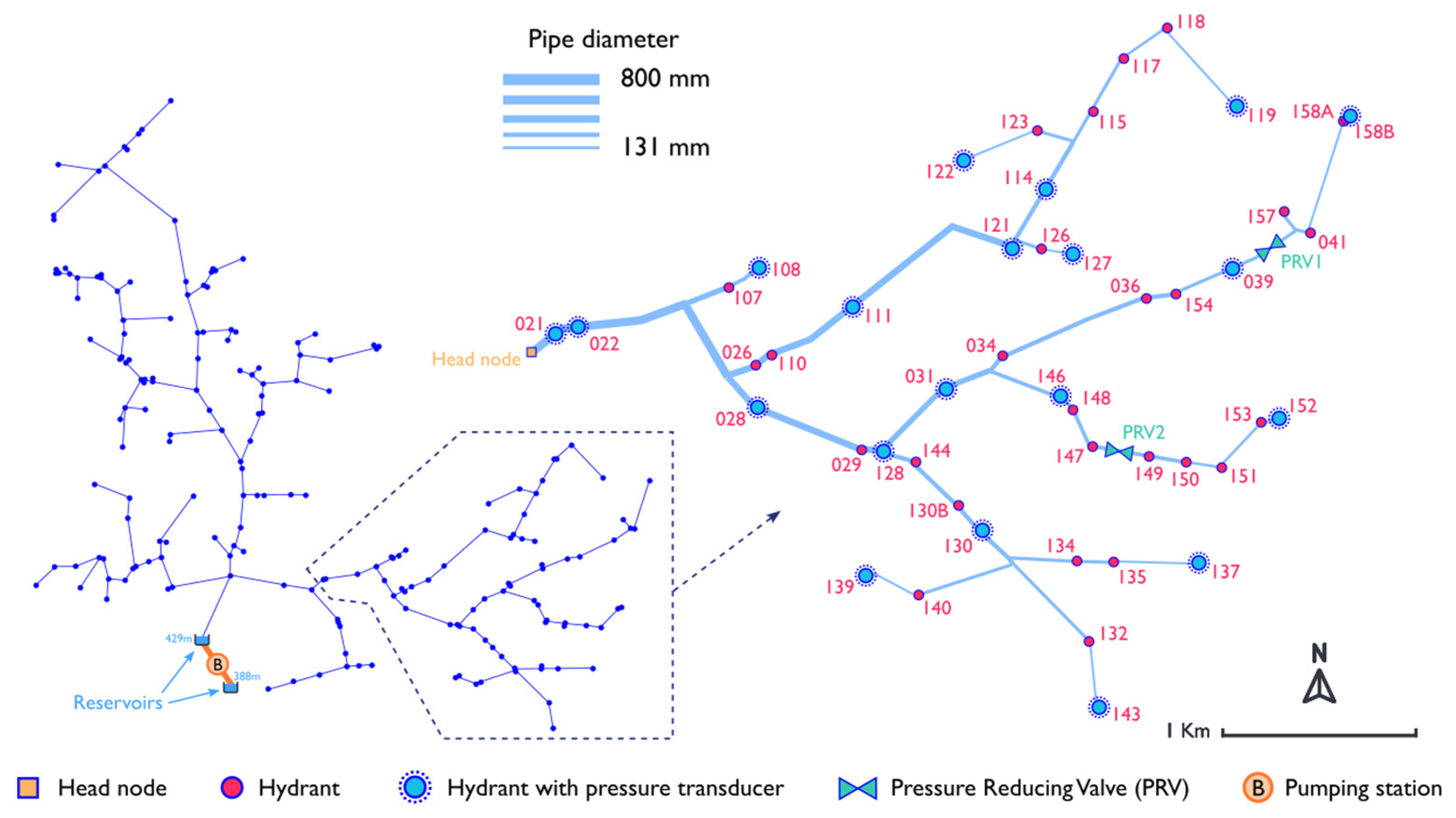

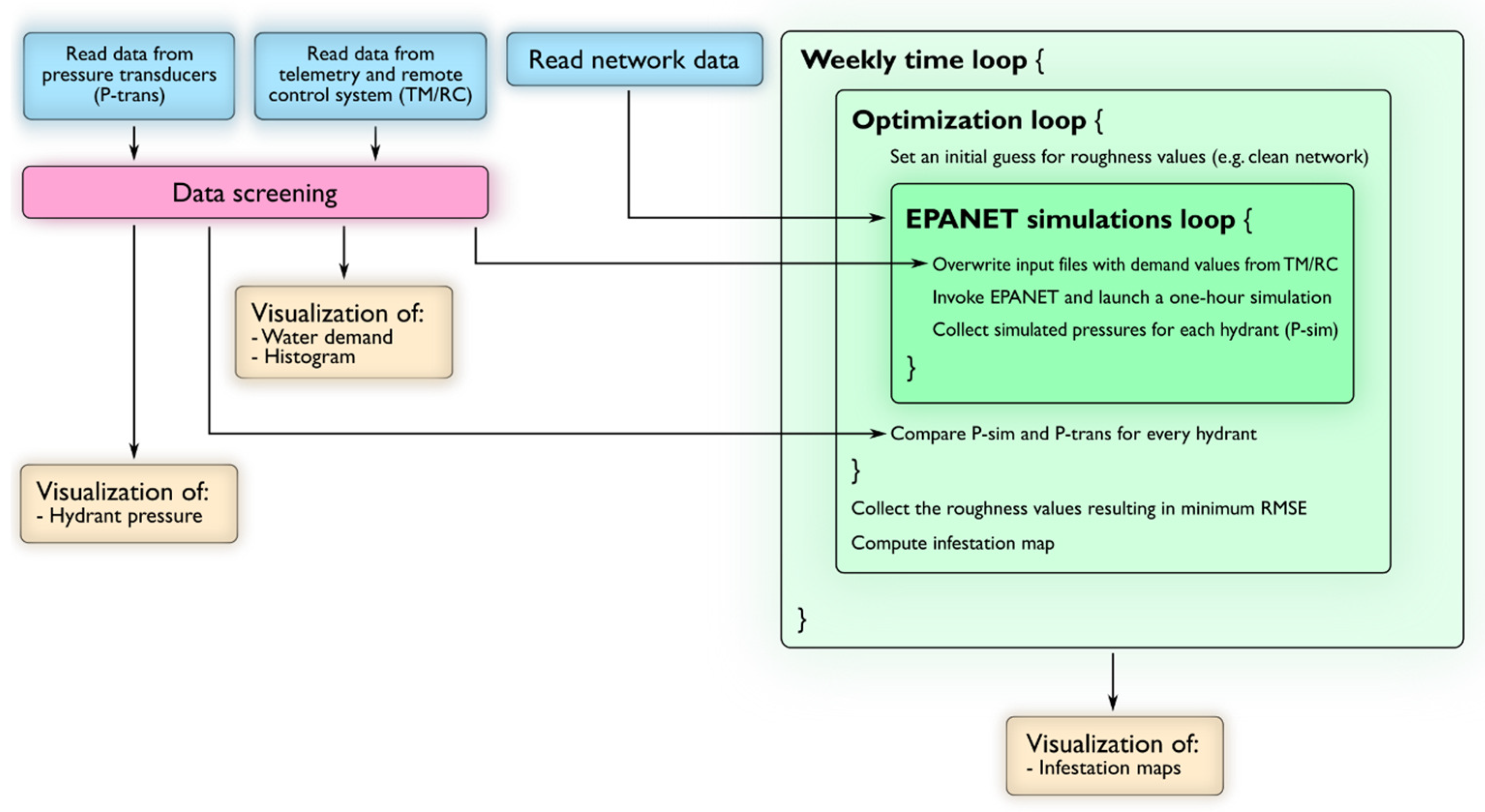


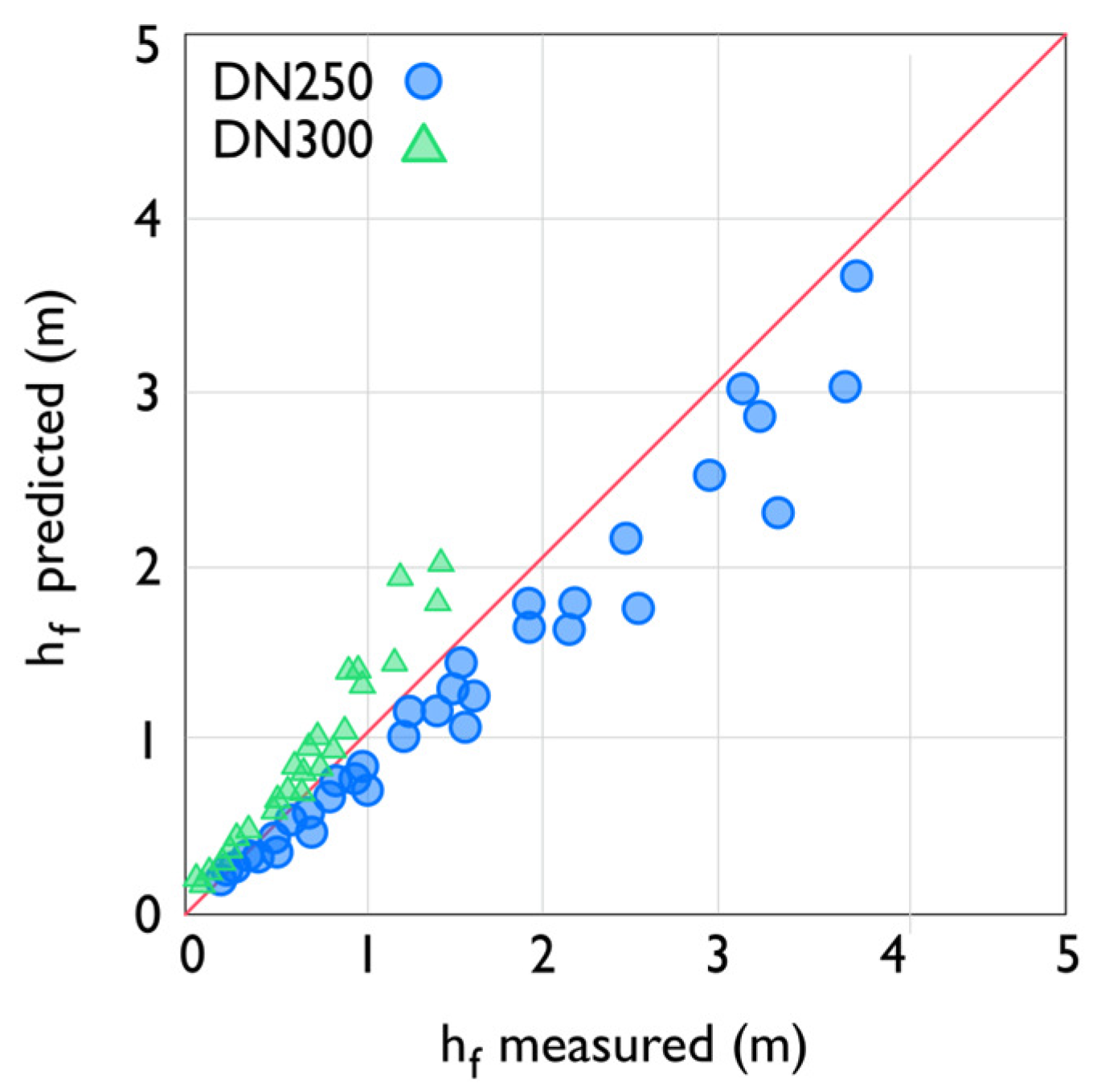
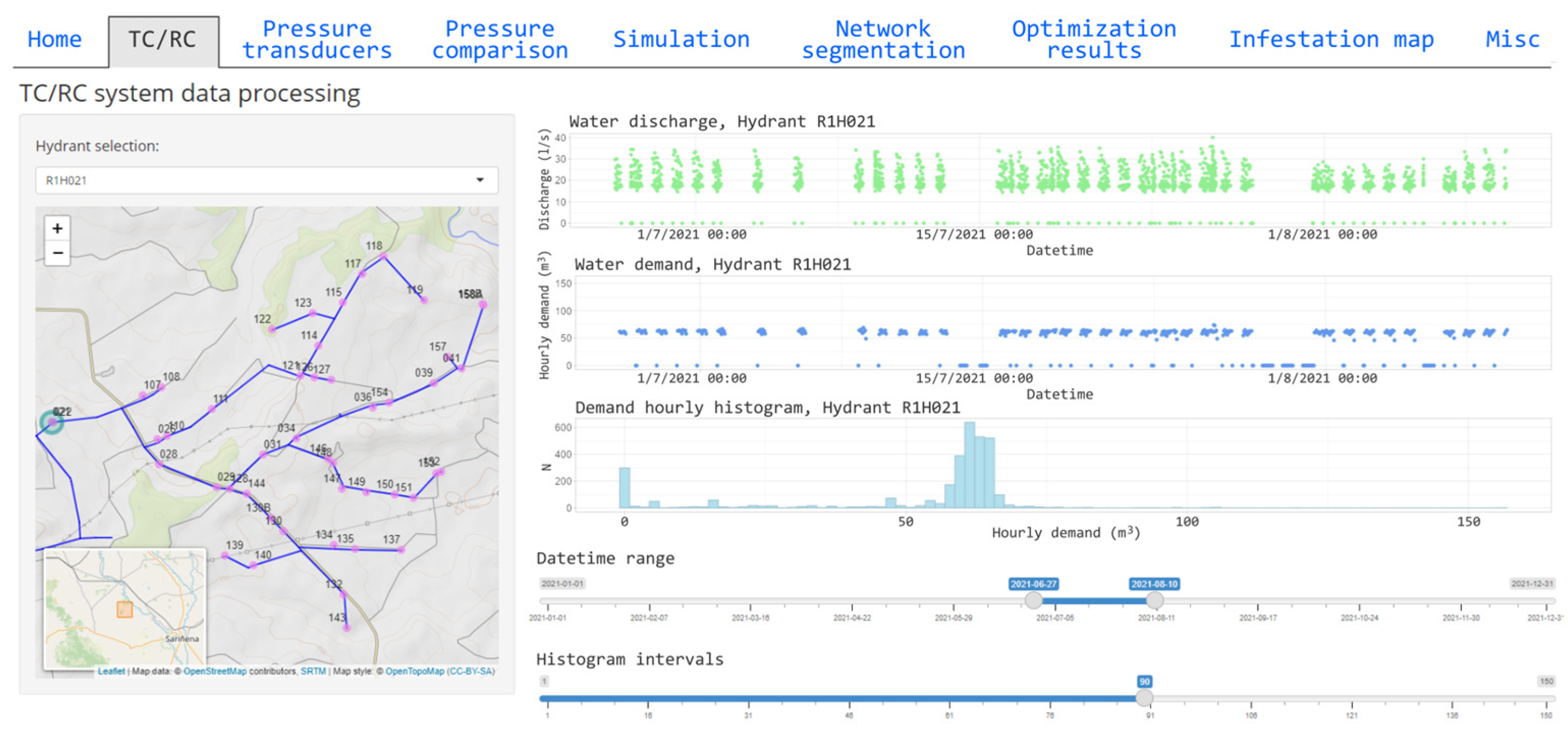
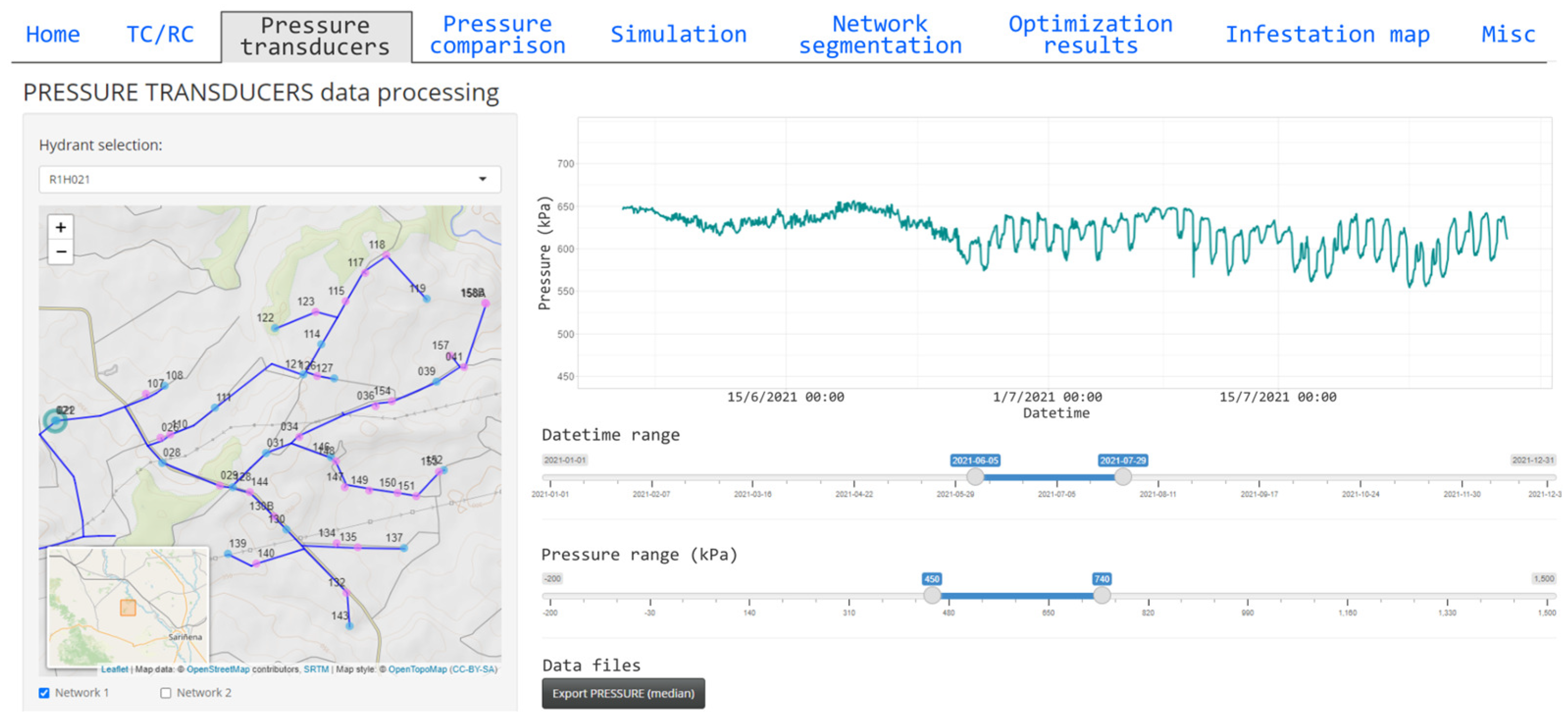
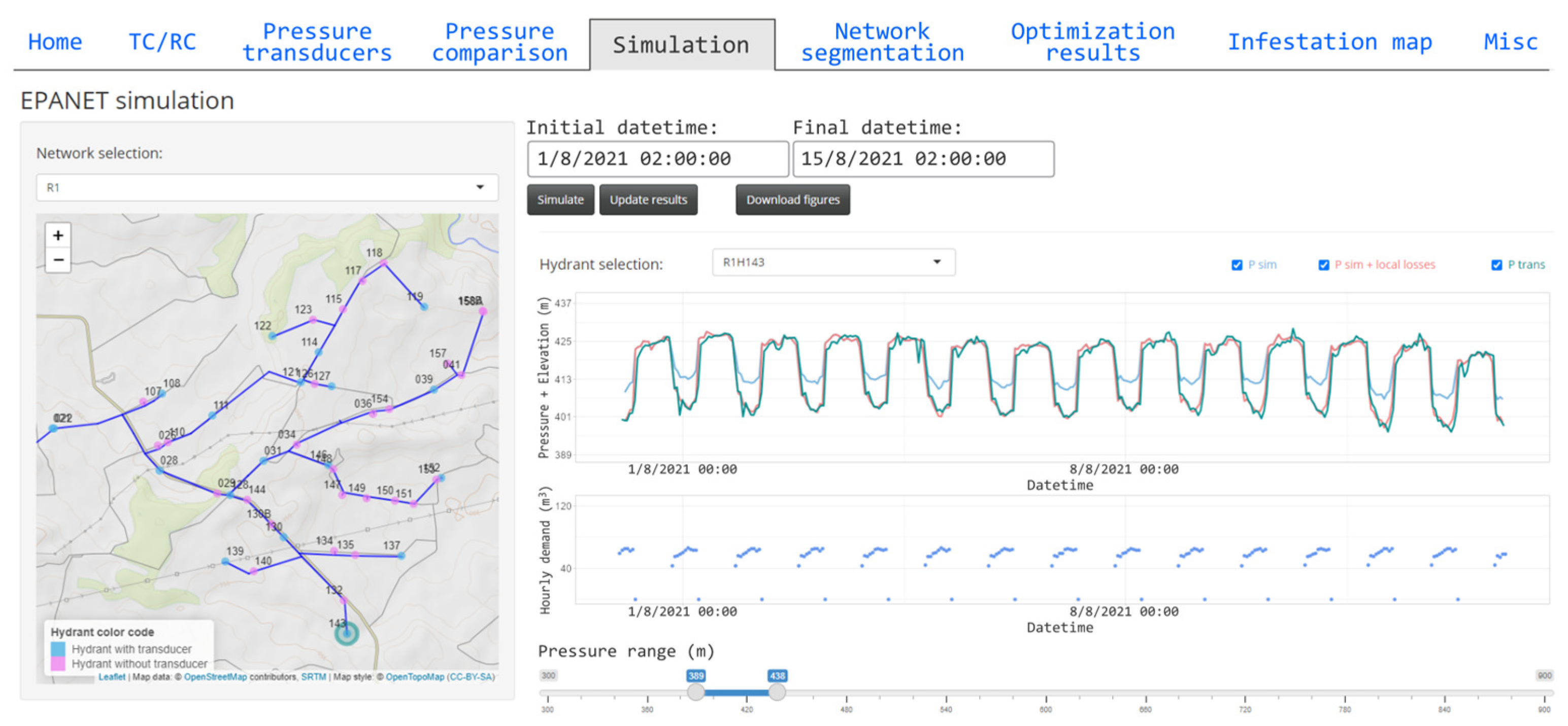

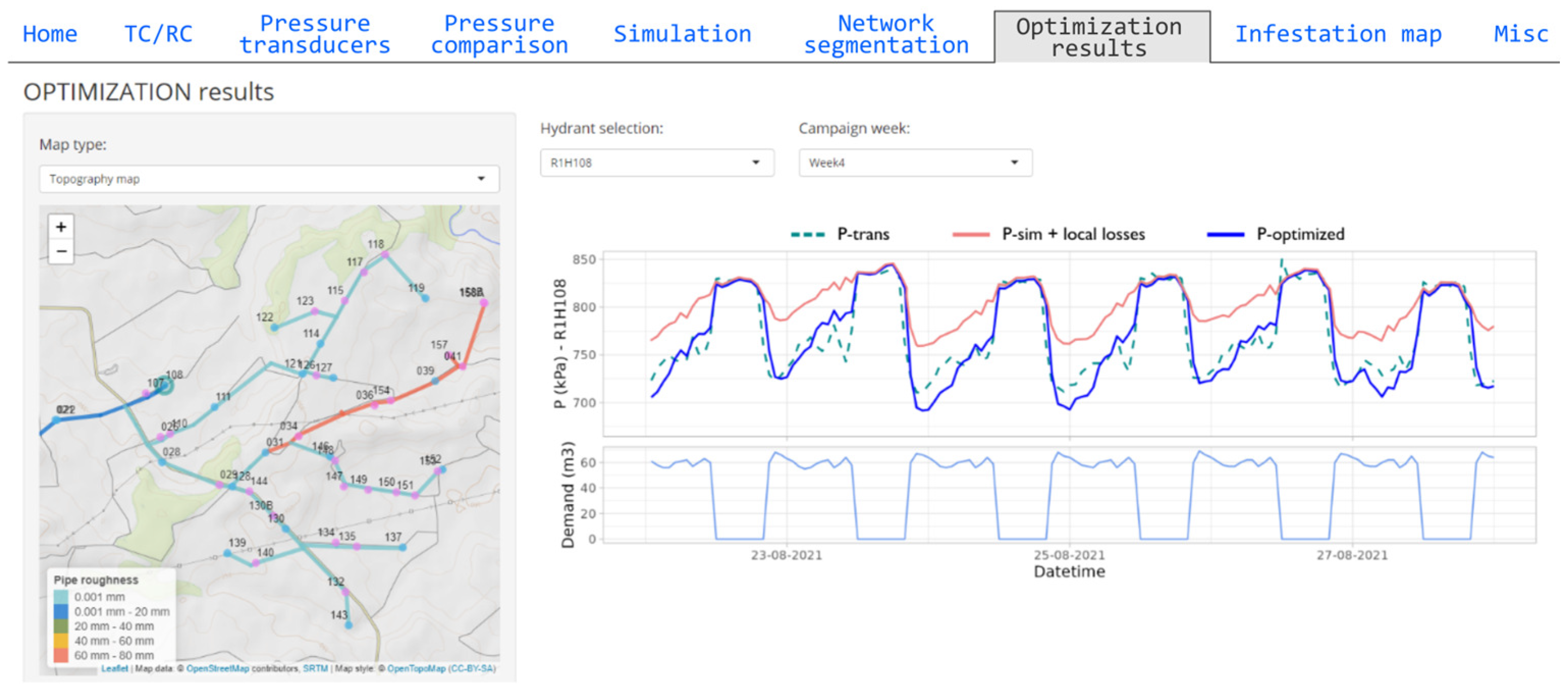


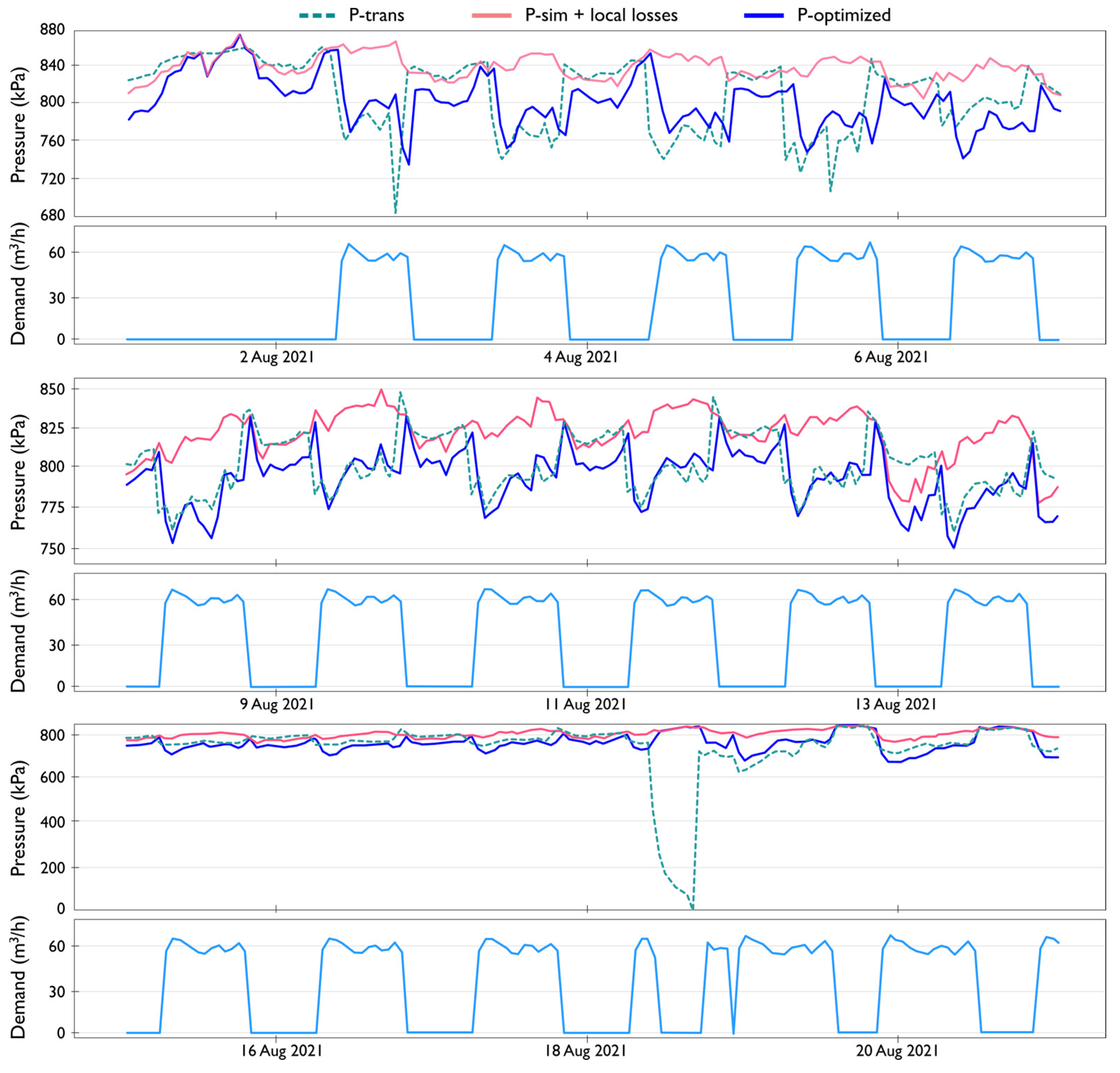
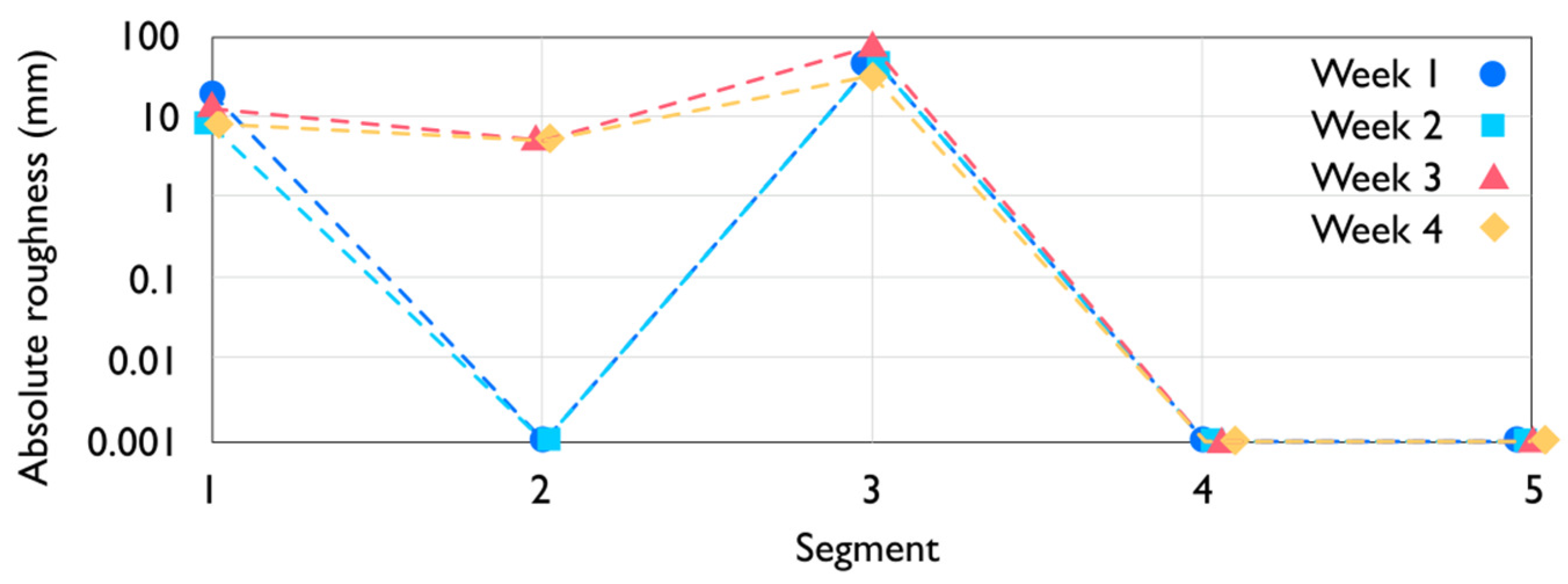
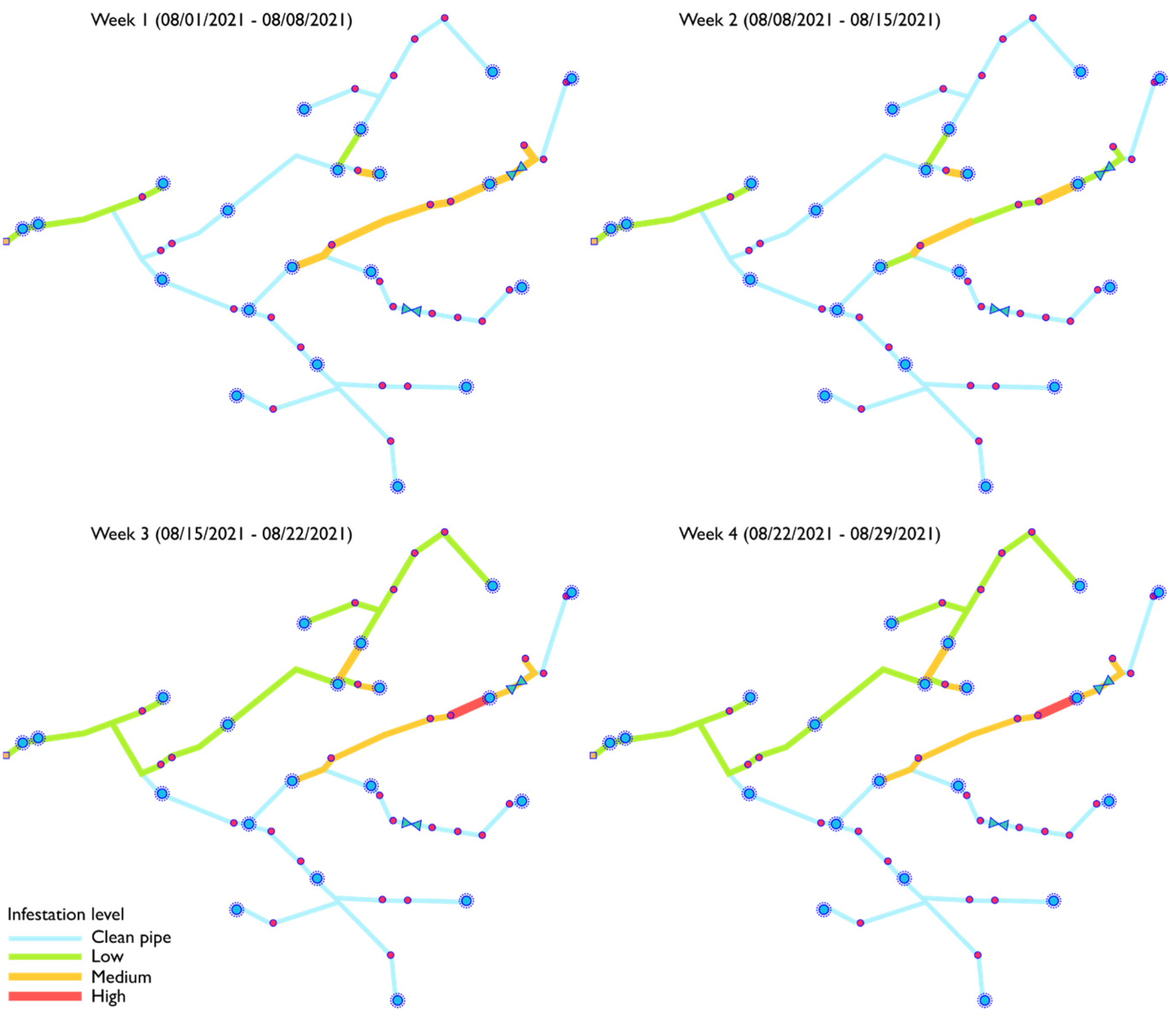
Disclaimer/Publisher’s Note: The statements, opinions and data contained in all publications are solely those of the individual author(s) and contributor(s) and not of MDPI and/or the editor(s). MDPI and/or the editor(s) disclaim responsibility for any injury to people or property resulting from any ideas, methods, instructions or products referred to in the content. |
© 2025 by the authors. Licensee MDPI, Basel, Switzerland. This article is an open access article distributed under the terms and conditions of the Creative Commons Attribution (CC BY) license (https://creativecommons.org/licenses/by/4.0/).
Share and Cite
Fernández-Pato, J.; Latorre, B.; Burguete, J.; Playán, E.; Paniagua, P.; Medina, E.T.; Zapata, N. A Cloud Toolkit for the Assessment of Invasive Species in Pressurized Irrigation Networks. Water 2025, 17, 1145. https://doi.org/10.3390/w17081145
Fernández-Pato J, Latorre B, Burguete J, Playán E, Paniagua P, Medina ET, Zapata N. A Cloud Toolkit for the Assessment of Invasive Species in Pressurized Irrigation Networks. Water. 2025; 17(8):1145. https://doi.org/10.3390/w17081145
Chicago/Turabian StyleFernández-Pato, Javier, Borja Latorre, Javier Burguete, Enrique Playán, Piluca Paniagua, Eva Teresa Medina, and Nery Zapata. 2025. "A Cloud Toolkit for the Assessment of Invasive Species in Pressurized Irrigation Networks" Water 17, no. 8: 1145. https://doi.org/10.3390/w17081145
APA StyleFernández-Pato, J., Latorre, B., Burguete, J., Playán, E., Paniagua, P., Medina, E. T., & Zapata, N. (2025). A Cloud Toolkit for the Assessment of Invasive Species in Pressurized Irrigation Networks. Water, 17(8), 1145. https://doi.org/10.3390/w17081145





